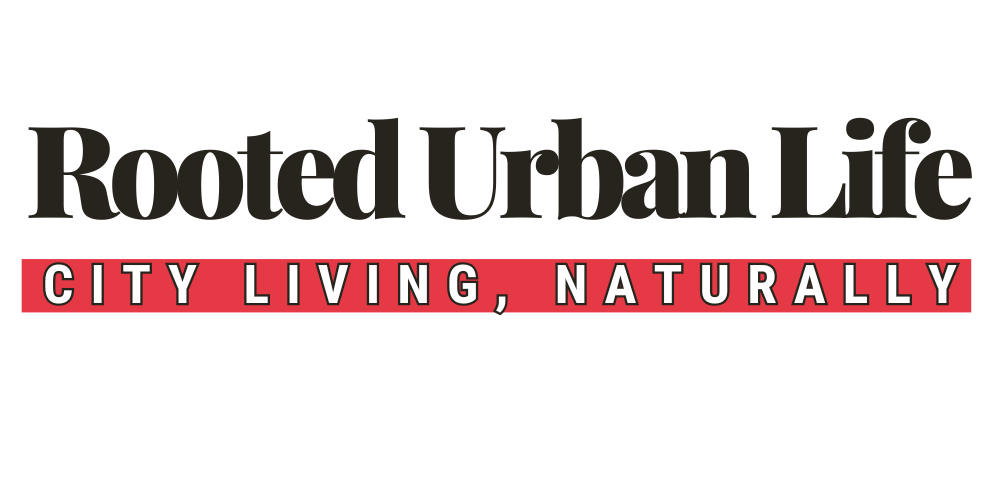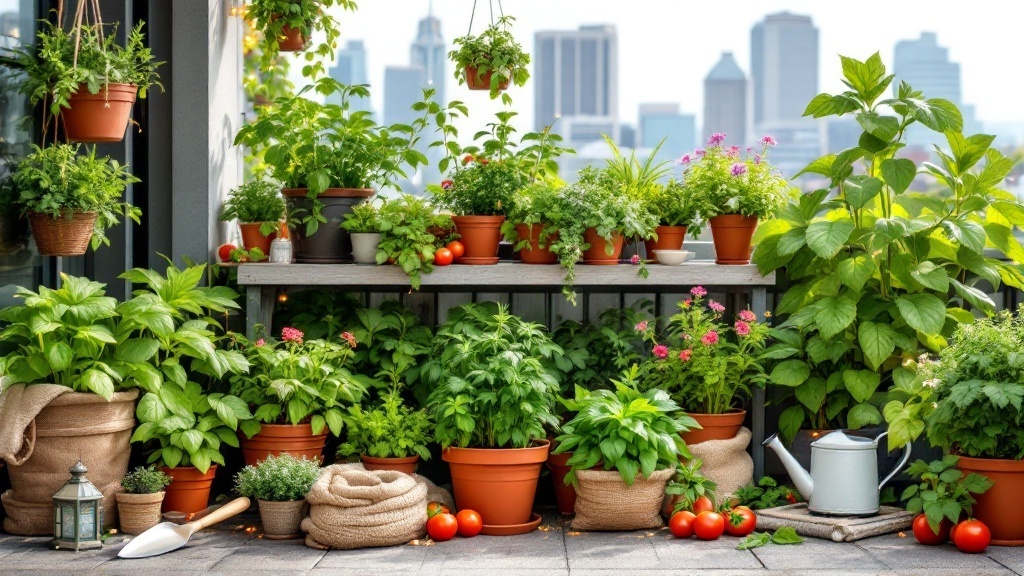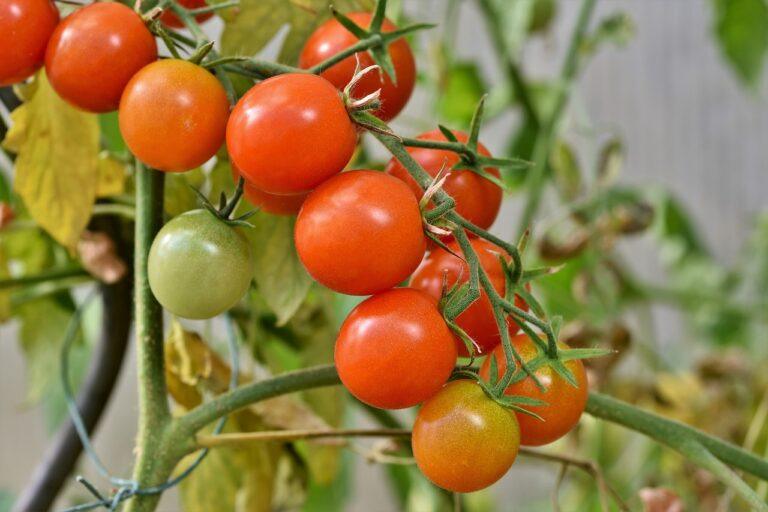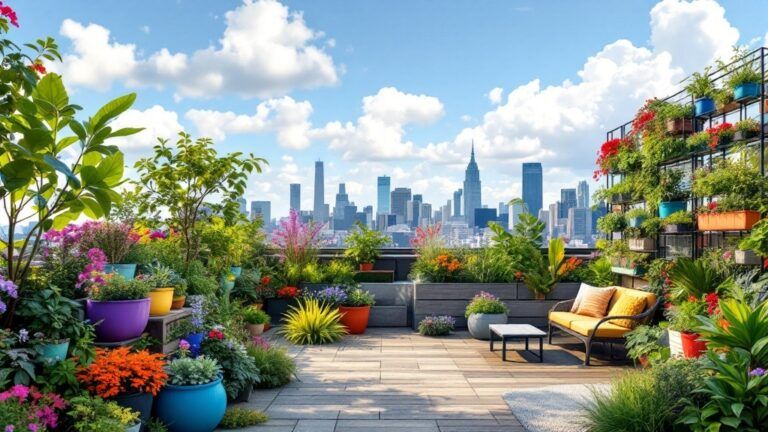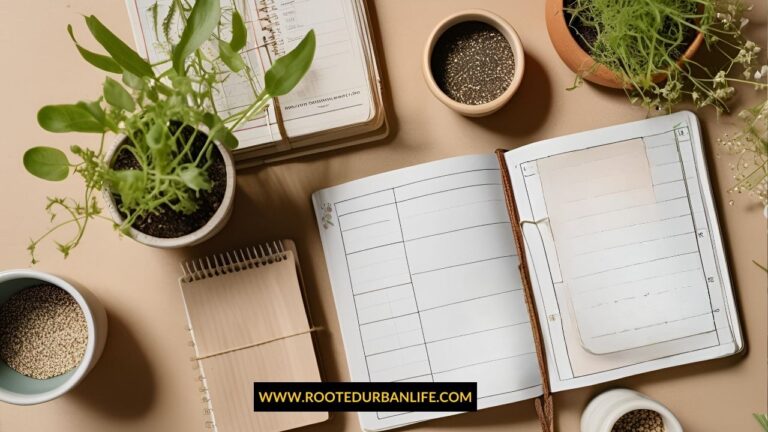How to Start a Container Garden: 6 Easy Steps for Small-Space Success
Ready to grow your own food but short on space? Container gardening is your answer!
The Container Gardening Challenge
If you’re living in an apartment, condo, or home with limited outdoor space, you might think growing your own food is impossible. Traditional gardening requires yards of soil, ideal growing conditions, and more space than most urban dwellers can spare. Many aspiring gardeners give up before they even start, missing out on the joy and satisfaction of harvesting their own fresh produce.
What You Will Learn
- How to select the perfect containers for different plants
- Which plants thrive in container environments
- Step-by-step setup of your first container garden
- Essential maintenance techniques for healthy growth
- Space-maximizing strategies for balconies, patios, and windowsills
- How to troubleshoot common container gardening challenges
As a fellow urban homesteading enthusiast who’s researched extensively while planning my own distant garden property, I’m excited to share what I’ve learned about starting a container garden that actually produces results—even in the smallest spaces.
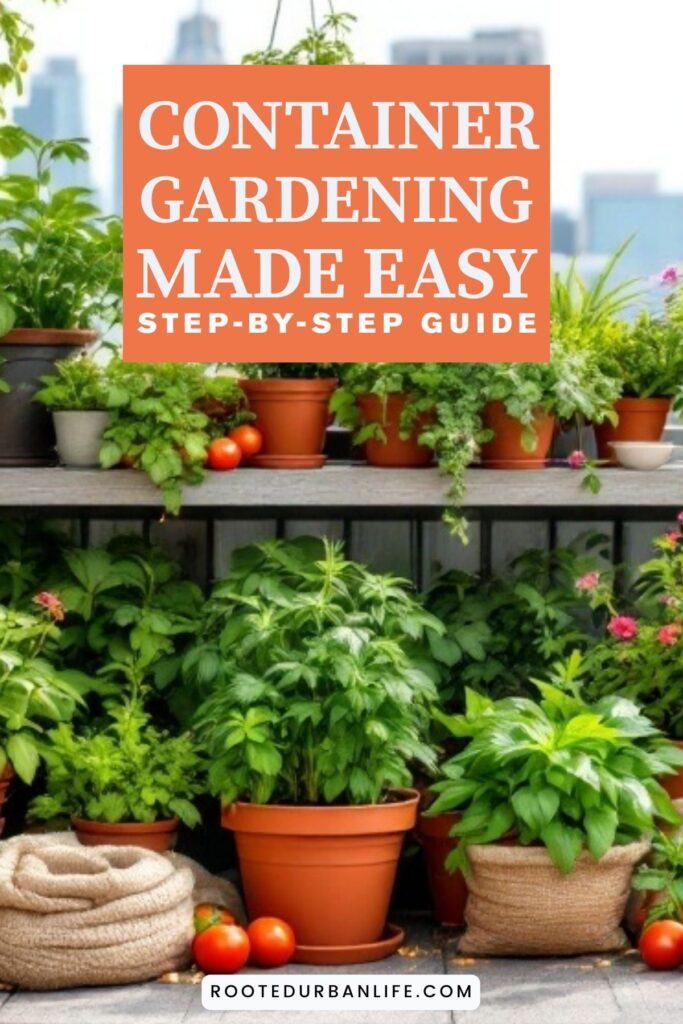
Essential Supplies for Your Container Garden
| Disclosure: If you shop from my article or make a purchase through one of my links, I may receive commissions on some of the products I recommend at no additional cost to you. |
Before diving into your container gardening adventure, gathering the right supplies will set you up for success from day one.
What You’ll Need:
- Containers (various sizes with drainage holes)
- High-quality potting mix (not garden soil)
- Slow-release organic fertilizer
- Small garden tools (trowel, pruners, watering can)
- Seeds or starter plants
- Plant markers or labels
- Saucers or trays (optional, for indoor containers)
My Experience: When I first researched container gardening, I tried to save money by using regular garden soil instead of potting mix. Big mistake! My plants struggled with poor drainage and compacted soil. Quality potting mix is worth every penny.
Essential Tool: A soil moisture meter has been a game-changer for my container garden planning. It removes all the guesswork from watering schedules, helping prevent both under and overwatering. This affordable moisture meter has helped countless beginners keep their container plants thriving.
1 Choosing Your Containers
The right containers can make or break your urban garden success. Starting with appropriate vessels ensures healthy root development and proper drainage.
Container selection begins with understanding what you’ll be growing. Different plants have different root depth requirements and space needs. While herbs might thrive in smaller pots, tomatoes and peppers need significantly more room to develop strong root systems.
Practical Container Selection Guide:
- Ensure adequate drainage holes in any container you choose
- Consider weight when planning for balconies (plastic and fabric pots are lighter than ceramic)
- Match container depth to plant needs (leafy greens: 4-6 inches; tomatoes: 12+ inches)
- Choose appropriate materials for your climate (terracotta dries quickly; plastic retains moisture)
- Look for food-safe materials when growing edibles
- Consider self-watering containers if you’re frequently away from home
- Repurpose household items like buckets or storage bins (with added drainage holes)
Difficulty: Beginner | Time investment: 1-2 hours for setup | Space required: As little as a windowsill
Pro Tip: Dark-colored containers absorb more heat, which can be beneficial in cooler climates but problematic in hot regions. In warm areas, choose lighter-colored containers or wrap dark ones with reflective material to prevent root overheating.
Container Recommendation: For beginners concerned about proper drainage and moisture control, these breathable fabric grow bags have transformed my container gardening experience. Their excellent drainage prevents root rot while the fabric material naturally “air prunes” roots for healthier plants. (affiliate link)
2 Selecting the Right Plants
Choosing suitable plants for container gardening sets the foundation for a successful small-space garden. Container gardening works best when you select varieties specifically bred for compact growth.
When selecting plants for your container garden, focus first on what you actually enjoy eating. There’s no point growing beautiful eggplants if no one in your household will eat them! Start with frequently used kitchen staples that are expensive to buy fresh.
Best Plants for Container Gardens:
- Choose “container” or “patio” varieties specifically bred for small spaces
- Consider compact determinate tomatoes rather than indeterminate varieties
- Plant “cut-and-come-again” vegetables like leaf lettuce for continuous harvests
- Mix shallow-rooted plants (herbs, lettuce) with deeper-rooted ones in the same container
- Include pollinator-friendly flowers to attract beneficial insects
- Start with easier crops like herbs, lettuce, and radishes before attempting challenging plants
- Choose dwarf varieties of traditionally large plants
Difficulty: Beginner-Intermediate | Time investment: 30 minutes for research | Space required: Varies by plant
Seed Recommendation: For guaranteed success in small spaces, this collection of container-specific vegetable seeds includes specially bred compact varieties that produce full-sized harvests in minimal space.
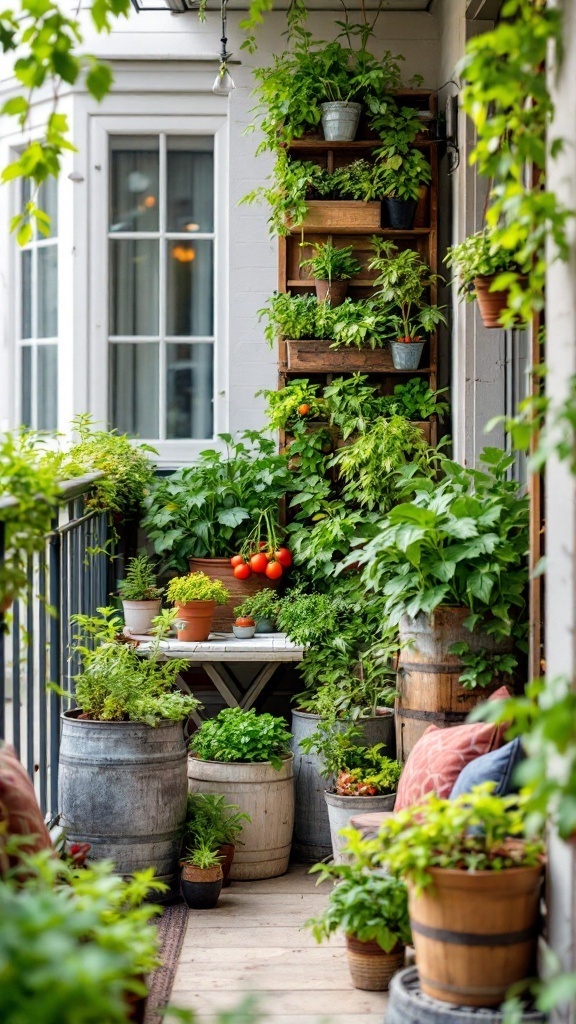
3 Setting Up Your Container Garden
Setting up your container garden properly from the beginning saves time and prevents frustration later. The foundation of container gardening success lies in proper preparation and placement.
Creating an effective container garden starts with understanding your available space’s microclimate. Take time to observe how sunlight moves across your balcony, patio, or windowsill throughout the day before deciding where to place your containers.
Container Garden Setup Process:
- Observe sun patterns in your space for at least a day before placing containers
- Clean new containers with mild soap and water to remove manufacturing residues
- Cover drainage holes with mesh or coffee filters (not rocks) to prevent soil loss
- Fill containers with quality potting mix to about 1 inch below the rim
- Pre-moisten soil thoroughly before planting
- Plant at proper depth according to seed packets or plant labels
- Label each container with plant variety and planting date
- Group plants with similar water needs together for efficient maintenance
- Create a watering plan based on your plants’ requirements and climate
My Experience: When I first researched container gardening, I made the mistake of placing all my containers based on aesthetics rather than sunlight needs. My shade-loving herbs got scorched, while sun-loving tomatoes languished in too much shade. Taking time to map your space’s sun exposure first saves heartache later!
Troubleshooting Table:
Setup Helper: For fool-proof container preparation, this premixed organic potting soil comes ready-to-use with the perfect blend of compost, perlite, and coconut coir for container gardens.
4 Watering & Maintenance
Maintaining your container garden requires consistent attention, as containers dry out faster than in-ground gardens. Proper watering is the cornerstone of container gardening success.
Container gardens demand more frequent watering than traditional gardens because of their limited soil volume. Learning to read your plants’ signals and establishing a routine will keep your garden thriving through changing seasons.
Container Garden Maintenance Essentials:
- Check soil moisture daily during warm weather (insert finger 1-2 inches deep)
- Water thoroughly until it drains from bottom holes, not just surface watering
- Water in the morning to reduce evaporation and fungal issues
- Apply liquid fertilizer every 2-3 weeks during growing season
- Prune regularly to encourage bushier growth and continued production
- Remove spent flowers and vegetables promptly
- Monitor for pests weekly by checking leaf undersides and stems
- Rotate containers occasionally for even growth
- Add mulch to container surfaces to retain moisture
- Provide support (stakes, cages) for taller plants before they need it
Difficulty: Intermediate | Time investment: 10-15 minutes daily | Space required: N/A
Pro Tip Box: Create a self-watering system for vacation periods by filling a clean wine bottle with water, then quickly inverting it into the moist soil of your container. The water will slowly release as the soil dries out, providing several days of moisture.
Watering Solution: Busy gardeners rejoice! This automatic drip irrigation kit has saved countless container gardens during my research. It connects to any outdoor faucet and delivers precise amounts of water directly to each container, even when you’re away or during heatwaves. (affiliate link)
5 Maximizing Small Spaces
Container gardening in urban environments requires creative use of limited space. Maximizing your growing area ensures the highest yield from the smallest footprint.
When working with limited space, thinking vertically transforms your container gardening potential. Even the smallest balcony or windowsill can become surprisingly productive when you utilize all three dimensions.
Space-Maximizing Strategies:
- Install vertical trellises against walls for vining plants
- Use tiered plant stands to create multiple growing levels
- Hang containers from railings, ceilings, or wall brackets
- Stack containers using sturdy plant towers
- Try upside-down planters for tomatoes and strawberries
- Plant along edges of larger containers while taller plants grow in the center
- Use window boxes on both inside and outside windowsills
- Create living walls with pocket planters or gutter systems
- Combine plants with different heights in the same container
- Utilize unused spaces like the tops of air conditioning units (with protection)
Difficulty: Intermediate | Time investment: 2-3 hours for setup | Space required: Even works for windowsills
Experiment Suggestion: Try creating a strawberry tower using a large PVC pipe with holes cut for plants. This allows you to grow 15-20 strawberry plants in the footprint of a single 5-gallon bucket!
Space Saver: The vertical garden wall planter has revolutionized small-space gardening in my research. With its 5 layers, it is perfect for growing herbs, greens, and strawberries in the tiniest urban spaces.
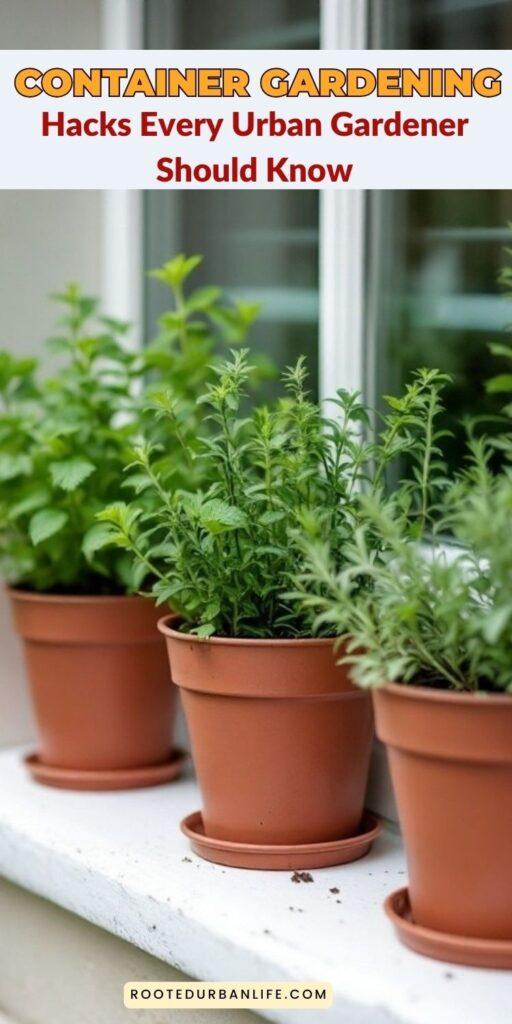
6 Troubleshooting Common Issues
Even experienced gardeners face challenges with container gardens. Knowing how to identify and resolve common problems quickly keeps your garden thriving.
Container gardens face unique challenges compared to in-ground gardens. Learning to recognize symptoms early and respond appropriately saves plants and preserves your harvest.
Common Container Garden Problems and Solutions:
- Inspect plants regularly for early signs of problems
- Quarantine new plants before adding to your container garden
- Practice crop rotation even in containers to prevent disease buildup
- Flush containers occasionally with plain water to prevent salt buildup
- Consider beneficial insects like ladybugs for pest control
- Keep a garden journal to track problems and successful solutions
- Adjust watering schedule with seasonal changes
My Experience: When my container tomatoes developed black spots on their lower leaves, I initially thought it was a nutrient issue and added more fertilizer. This actually made the problem worse. After research, I learned it was early blight fungus, which required removing affected leaves and improving air circulation. Proper identification is crucial before treatment.
Problem Solver: For organic pest management that actually works, this concentrated neem oil spray has saved countless container gardens in my research. It controls most common garden pests while remaining safe for edible plants right up to harvest day. (affiliate link)
Key Takeaways
- Container gardening makes growing food possible in any space – from apartment balconies to sunny windowsills
- Proper container selection and quality potting mix form the foundation of success
- Plant selection should focus on compact varieties specifically bred for container growing
- Regular watering and fertilizing are essential as containers dry out faster than ground soil
- Vertical growing techniques dramatically increase yield in small spaces
- Early problem identification keeps container gardens productive and healthy
Frequently Asked Questions
How often should I water my container garden?
During warm weather, most containers need checking daily and watering every 1-3 days depending on container size, material, and plant type. Always check moisture levels by inserting your finger 1-2 inches into the soil.
Can I reuse potting soil from year to year?
Yes, with refreshing. Remove 1/3 of old soil, add fresh potting mix with compost and slow-release fertilizer. For disease prevention, completely replace soil that grew tomatoes, peppers, or showed signs of disease.
What vegetables give the best yield in containers?
Focus on high-value, container-friendly crops: leafy greens, cherry tomatoes (determinate varieties), bush beans, peppers, and herbs like basil, cilantro, and mint.
How do I prevent pests in my container garden?
Regularly inspect plants (especially leaf undersides), maintain good air circulation, avoid overwatering, and introduce beneficial insects. For organic control, you can use diluted neem oil in a spray bottle.
Can I grow vegetables in partial shade?
Yes! While most vegetables prefer full sun, these crops perform well in partial shade (4-6 hours): leafy greens, herbs like mint and parsley, radishes, peas, and Asian greens.
Next Steps on Your Container Gardening Journey
Ready to expand your container gardening skills? Explore these related resources:
Recommended Tools & Resources
These are the tools and resources I’ve found most valuable for container gardening success:
- Self-Watering Pot Converter Kit – Transforms any container into a self-watering system
- Stackable Planter System – Creates a vertical garden in just 2 square feet
- Worm Casting – Instant organic fertilizer for nutrient boosts
- Floating Row Cover – Lightweight fabric that prevents insects while allowing light and water
- Sticky Trap Cards – Early warning system for pest detection
Start Your Container Garden Today!
Container gardening opens a world of growing possibilities regardless of your living situation. With just a few containers, quality soil, and suitable plants, you can create a productive mini-garden that provides fresh harvests and the satisfaction of growing your own food.
Remember, gardening is a journey of continuous learning—each season brings new insights and improvements. Start small, observe closely, and enjoy the process of creating your own urban oasis, one container at a time.
What will you grow first in your container garden? Share your plans in the comments below!

